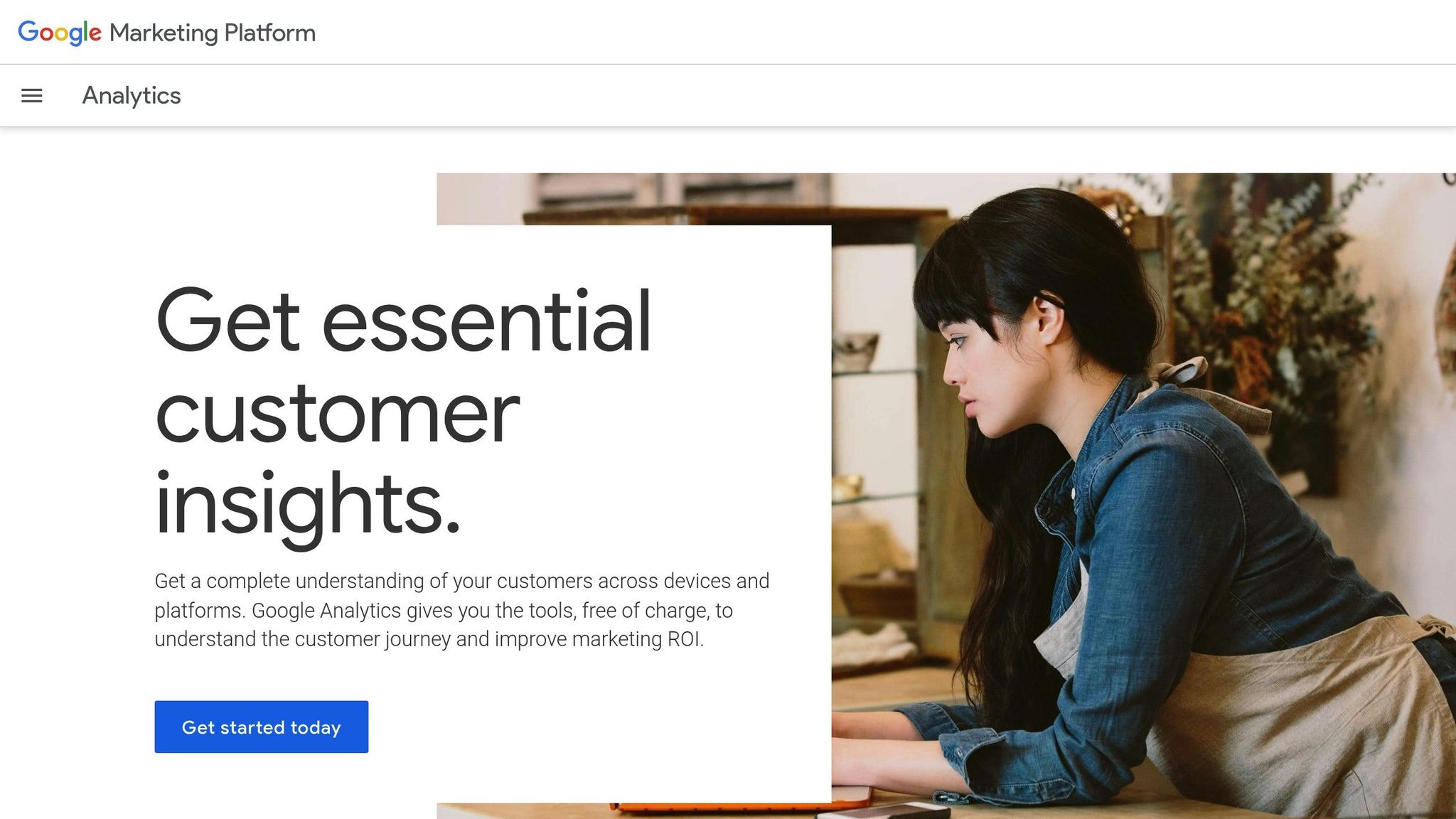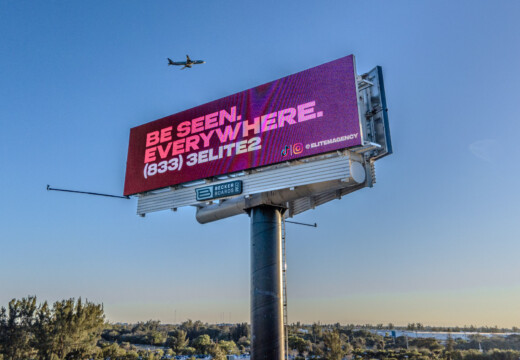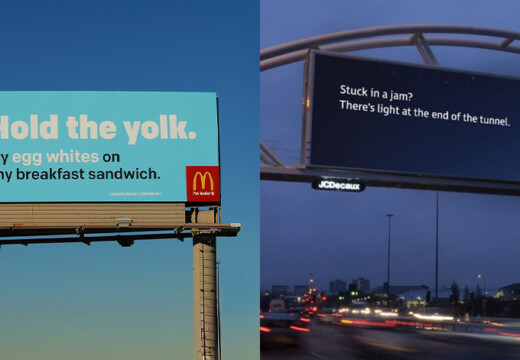Want to know if your billboard campaigns are driving results? By integrating billboard ROI with Google Analytics, you can measure how outdoor ads contribute to website traffic, sales, and overall marketing success. Here’s how:
- Track Performance: Use UTM parameters and QR codes to link billboard traffic to your website.
- Measure ROI: Combine campaign costs with conversion data to calculate revenue impact.
- Optimize Campaigns: Analyze impressions, traffic, and conversions to improve ad placements and design.
Set up clear goals, use tools like Blip‘s dashboard and Google Analytics, and follow a structured process to connect offline visibility with online results. This approach helps you make smarter decisions and maximize your advertising budget.
Billboard ROI Basics and Analytics
Measuring Billboard ROI
To calculate billboard ROI, you need to track a few key factors: campaign costs, impressions, website traffic, and conversions.
Ray Bowens, Founder of Hashtag-Vape, highlights the cost advantage:
"Billboards are one of the most impactful ways to advertise, and with Blip, you spend a fraction of what you would end up paying elsewhere."
Here’s what to focus on for accurate ROI measurement:
- Campaign cost: Multiply daily spend by the campaign duration.
- Impressions: Total number of people who potentially see your billboard.
- Website traffic: Track visitors driven by billboard exposure.
- Conversions: Measure the value of actions taken by billboard-driven traffic.
These components are the foundation for understanding your billboard campaign’s performance.
Key Performance Metrics
To connect outdoor advertising to online results, monitor these critical metrics:
| Metric | Description | Why It Matters |
|---|---|---|
| Daily Impressions | Number of people passing by the billboard | Shows how many might see your ad |
| Cost Per Thousand (CPM) | Cost to reach 1,000 viewers | Helps assess spending efficiency |
| Website Traffic | Visits from URLs tied to the billboard | Tracks how the ad drives online interest |
| Conversion Rate | Percentage of visitors who take action | Indicates how effective the campaign is |
Google Analytics for ROI Tracking

Google Analytics is a powerful tool for connecting billboard campaigns to online user activity. Here’s how it can help:
1. Track Campaign Performance
Use custom UTM parameters to tag your billboard campaigns. This makes it easy to identify traffic sources and compare the performance of different billboard locations or designs.
2. Monitor User Behavior
Dive into how billboard-driven users engage with your website. Key metrics to watch include:
- Average session duration
- Pages viewed per session
- Goal completions
- E-commerce revenue
3. Calculate ROI
Combine your campaign costs with conversion data from Google Analytics. This gives you a clear picture of how much revenue your billboard campaign is generating compared to what you’re spending.
Setup Requirements
Campaign Goals and Metrics
Start by defining clear goals for your campaign. Use SMART criteria to ensure your objectives are specific, measurable, and actionable. Next, establish key performance indicators (KPIs) to track progress. Here are a few examples:
| Goal Type | Example Metric | Tracking Method |
|---|---|---|
| Brand Awareness | Daily Impressions | Billboard Analytics Dashboard |
| Website Traffic | Unique Visitors | Google Analytics |
| Lead Generation | Form Submissions | Goal Tracking in GA |
| Sales | Revenue | E-commerce Tracking |
Blip’s interactive marketplace provides metrics like daily impressions and CPM rates. These tools help you set realistic targets before launching your campaign.
Technical Setup Steps
Once your goals are clear, follow these steps to prepare the technical side of your campaign:
-
Google Analytics Configuration
Set up a GA4 property to track your billboard campaign. Be sure to include:- Enhanced measurement
- E-commerce tracking (if applicable)
- Custom campaign parameters
- Cross-domain tracking
-
UTM Parameter Structure
Use a standardized UTM structure to track your billboard campaigns effectively. Here’s an example:utm_source=billboardutm_medium=outdoorutm_campaign=spring2025utm_content=location_id
-
QR Code Implementation
Create unique QR codes for each billboard. Ensure they are at least 100×100 px, have high contrast for readability, and are placed in the lower third of the design.
Data Collection Setup
To measure campaign performance accurately, align your data collection methods with your goals. One effective strategy is creating dedicated landing pages tailored to your billboard messaging. Here’s what you need to set up:
- Custom landing pages: Each billboard should direct users to a page that mirrors its messaging.
- Goal tracking: Configure Google Analytics to track specific goals.
- Event tracking: Monitor user actions like clicks or form submissions.
To maximize data collection, integrate these tracking elements:
| Element | Purpose | Implementation |
|---|---|---|
| Landing Page | Track initial visits | Create unique pages per campaign |
| Event Tags | Monitor user actions | Set up GA4 event tracking |
| Conversion Goals | Measure success | Configure goal completions |
| Custom Dimensions | Segment billboard data | Add location-specific parameters |
This setup ensures you can analyze and optimize your campaign effectively.
Integration Steps
Setting Up Campaign URLs
Use Google’s Campaign URL Builder to create trackable URLs for your billboards, ensuring accurate integration with Google Analytics. Here’s how to structure your parameters:
| Parameter | Example Value | Purpose |
|---|---|---|
| Campaign Source | billboard_i95_boston | Identifies the billboard’s location |
| Medium | digital_display | Defines the ad format |
| Campaign Name | summer_2025 | Groups related campaigns |
| Content | qr_code_north | Differentiates ad variations |
If you’re using Blip’s platform, you can integrate these parameters directly into your campaign setup. Blip’s analytics dashboard automatically generates unique tracking codes for each location, saving you time.
Once your URLs are configured, shift your attention to designing a clear and trackable call-to-action (CTA) for your billboard.
Billboard Call-to-Action Setup
A well-executed CTA is essential for driving engagement and tracking results. Focus on these two elements:
- QR Code Placement: Create a QR code that embeds your campaign URL. Ensure it’s easy to scan and prominently displayed on your billboard design.
- Short URL Creation: Generate a simple, memorable short URL that redirects to your tracking-enabled landing page. This makes it easy for users to type in the URL if they can’t scan the QR code.
Google Analytics Data Setup
After setting up your URLs and CTAs, configure Google Analytics to track and analyze your billboard campaign data effectively:
-
Custom Channel Grouping
Set up a dedicated channel to isolate billboard traffic:Rule Type Condition Value Source If the traffic source contains ‘billboard’ billboard Medium Exact Match digital_display Campaign Starts With location_ -
Custom Reports
Use custom reports to gain deeper insights, such as:- Geographic performance by billboard location
- Engagement patterns by time of day
- Device category metrics (mobile vs. desktop)
- Conversion path analysis to track user journeys
-
Data Filters
Fine-tune your data by applying these filters:- Exclude internal traffic from your team
- Filter out bot traffic to maintain clean data
- Create view filters for specific billboard locations
- Add custom dimensions to track billboard-specific metrics
sbb-itb-2e2e93f
You Ask, I Answer: Tracking Non-Digital Marketing in Google …
Campaign Improvement
Once tracking is set up, use analytics tools to refine your advertising strategy and make smarter decisions.
Multi-Channel Performance
Combine Google Analytics with Blip’s data to measure how billboards contribute to your overall marketing efforts. This integration provides a clear view of how your campaigns perform across different channels.
ROI Calculation Guide
To calculate the ROI of your billboard campaigns, compare the total campaign costs with the revenue and engagement metrics. Use real-time data from Blip and Google Analytics for accurate results.
Data-Driven Updates
Use your analytics to make these updates:
- Design Tweaks: Study user behavior in Google Analytics to identify which creative elements work best.
- Location Insights: Use Blip’s location data alongside digital analytics to find the most effective billboard placements.
- Smarter Budgets: Shift your spending to locations and times that deliver better results.
Tips and Solutions
Boost your campaign’s effectiveness with thorough data checks, clear troubleshooting methods, and strict adherence to privacy practices.
Data Quality Checks
Make sure your billboard tracking is accurate by focusing on these key areas:
-
UTM Parameter Testing
Test all campaign URLs to confirm UTM parameters display correctly in Google Analytics. Double-check that custom parameter names match your tracking plan. -
QR Code Verification
Monitor scan performance and track conversion rates. Ensure QR codes lead users to properly tagged landing pages. -
Cross-Device Validation
Test tracking on mobile, tablet, and desktop devices. Confirm that UTM parameters carry over across devices and verify session attribution aligns with your campaign settings.
These steps help you collect reliable data before tackling any issues.
Problem-Solving Guide
If you notice data inconsistencies, follow these steps to pinpoint and fix problems:
-
QR Code Performance Issues
Check the design and placement of your QR codes to improve scannability. -
Attribution Gaps
Adjust attribution windows in Google Analytics and review channel groupings. Ensure consistent use of UTM parameters across all campaign elements. -
Data Discrepancies
Compare metrics from your digital billboard platform with Google Analytics. Check for filters in Google Analytics that might affect reporting and ensure timezone settings are consistent across platforms.
Data Privacy Rules
Accurate tracking should always go hand-in-hand with secure data practices. Follow these guidelines to stay compliant and build trust:
-
CCPA Requirements
Include clear privacy notices on landing pages, provide an easy opt-out option, and document how data is collected. -
GDPR Considerations
Get user consent before collecting personal data, limit data collection to what’s necessary, and ensure secure data transfers between systems. -
Best Practices
Regularly audit tracking parameters to avoid collecting unnecessary data. Use aggregated data for reporting when possible, and keep your privacy policies updated to reflect current tracking methods.
Conclusion
Combining billboard ROI data with Google Analytics provides a solid way to measure and improve outdoor advertising efforts. It delivers clear insights into how your campaigns contribute to marketing performance and measurable outcomes.
To get the most out of this approach, focus on precise tracking, reliable data, and strict privacy compliance. This integration improves cross-channel attribution, boosts tracking accuracy, and helps fine-tune your campaign strategies. By linking billboard analytics with Google Analytics, you can:
- Understand cross-channel attribution: See how billboards support your digital marketing efforts.
- Measure campaign ROI: Connect outdoor visibility to online conversions for a clearer picture of success.
- Optimize placements and creativity: Use data to make smarter decisions about where and how to advertise.
This approach not only helps manage costs but also highlights the importance of data-driven decisions in outdoor advertising.


